Here’s One Vintage Sparkle Finish Guitar You Can Bag Relatively Cheap
Twinkle, twinkle, little Tele-Star, how I wonder what you are worth
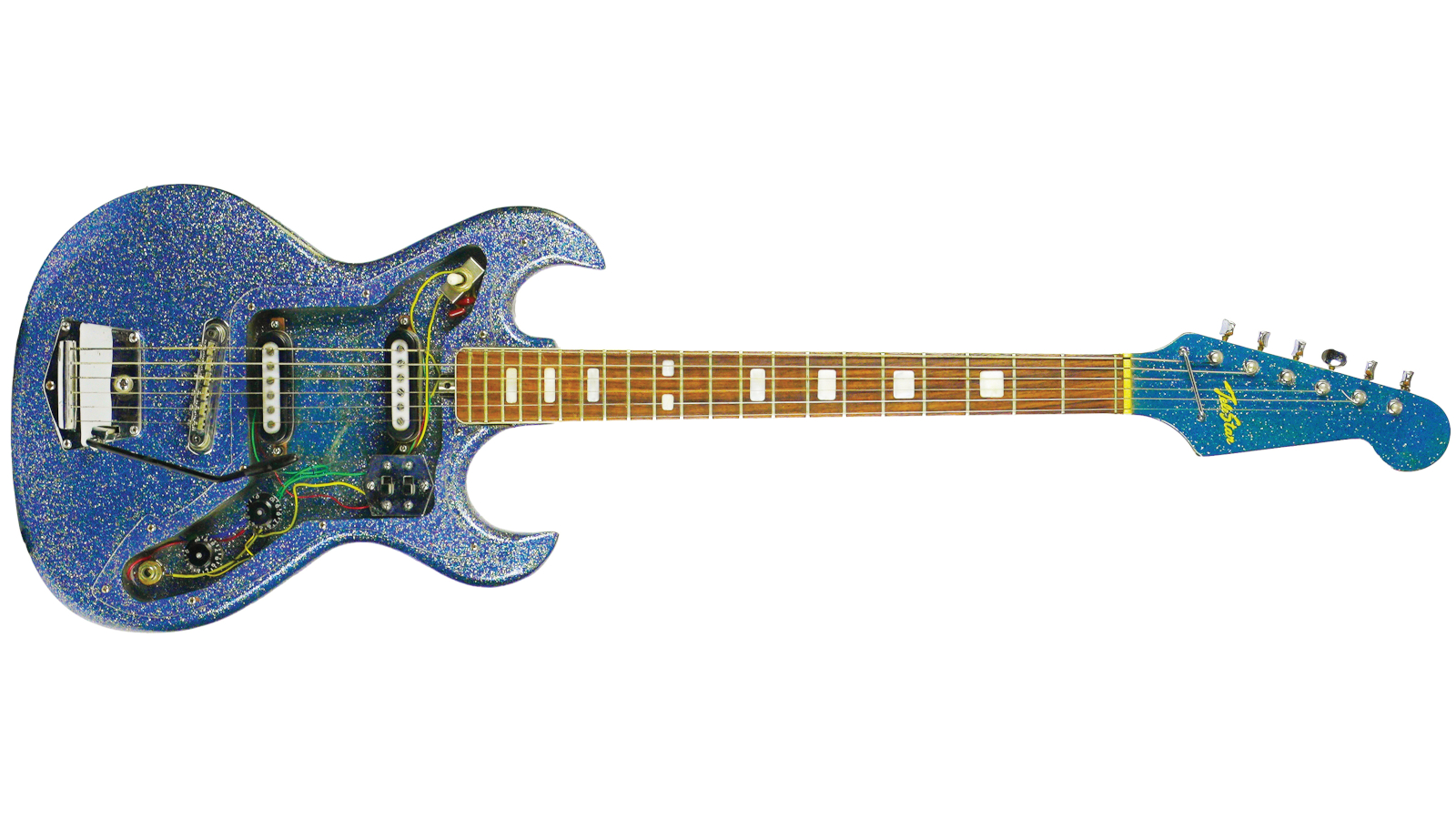
Sparkle finishes are rather commonplace on guitars today, but they were less so in the 1960s, seen mostly on some models from Danelectro, Gretsch and EKO.
To that group we can add Tele-Star, which offered electric guitars in a range of sparkly finishes, from gold to teal.
Later models were made by the highly respected Japanese guitar maker Kawai
Whatever the overall color scheme, their sparkles were always multicolored, and as such glimmered like one of Liza Minelli’s dresses in Cabaret!
While Tele-Star was an independent Japanese manufacturer in the mid ’60s, later models were made by the highly respected Japanese guitar maker Kawai and played better as a result.
The 1967-to-1970 sparkle-finished 5000 series guitars, like the two-pickup model shown here, are the ones the collectors chase.
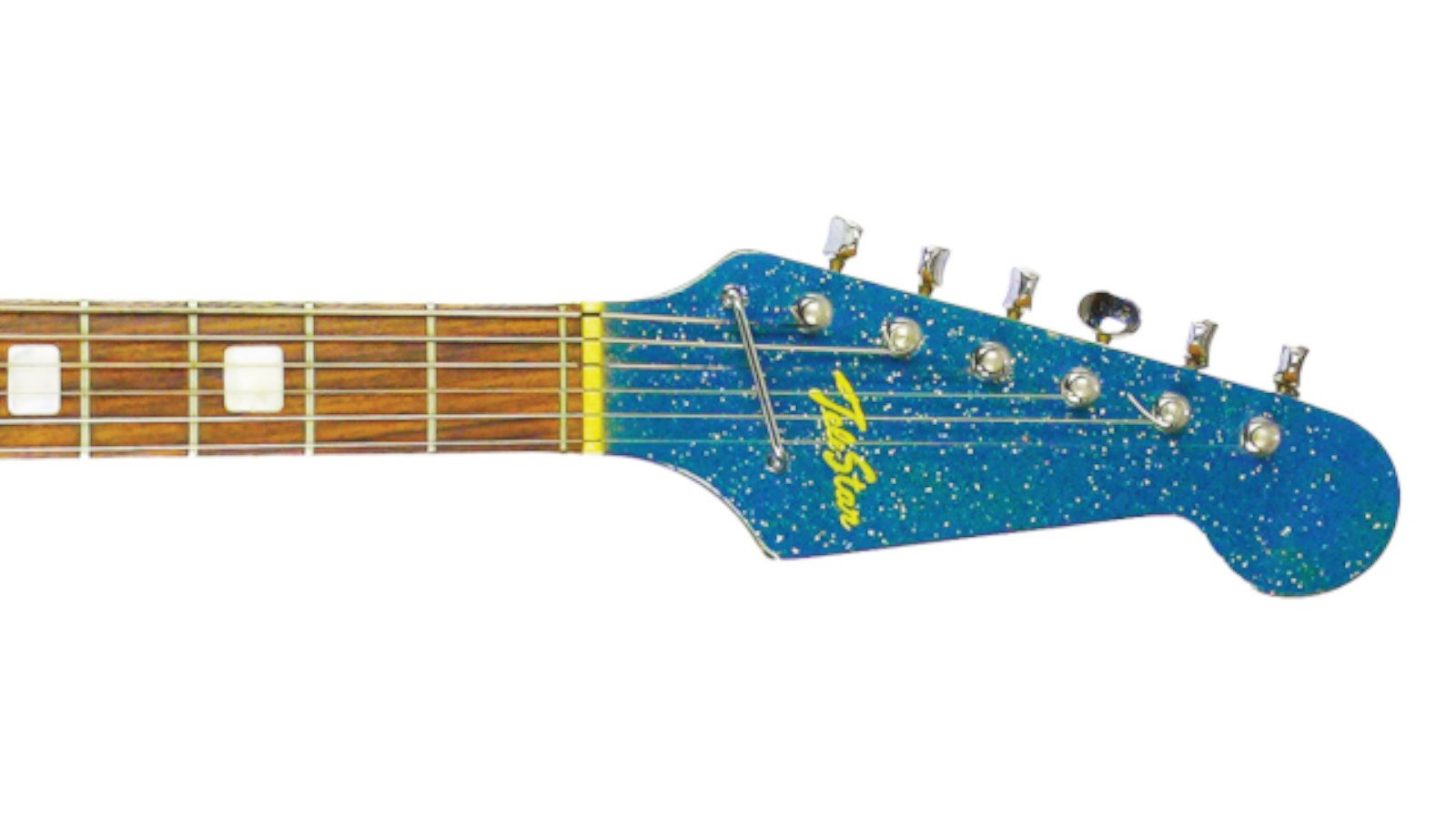
Weirdo Factor
The weirdness pretty much starts and ends with the outspoken finish, which really stands out on my example due to the clear pickguard.
The original tortoiseshell plate was cracked, and when I opened it up to make a repair I noticed that the sparkle finish extended to the electronics cavity, which gave me the idea to replace the plate with clear Plexiglas.
All the latest guitar news, interviews, lessons, reviews, deals and more, direct to your inbox!
The guitar was also missing knobs and a trem bar, so I replaced them with Gibson knobs and a Fender trem bar.
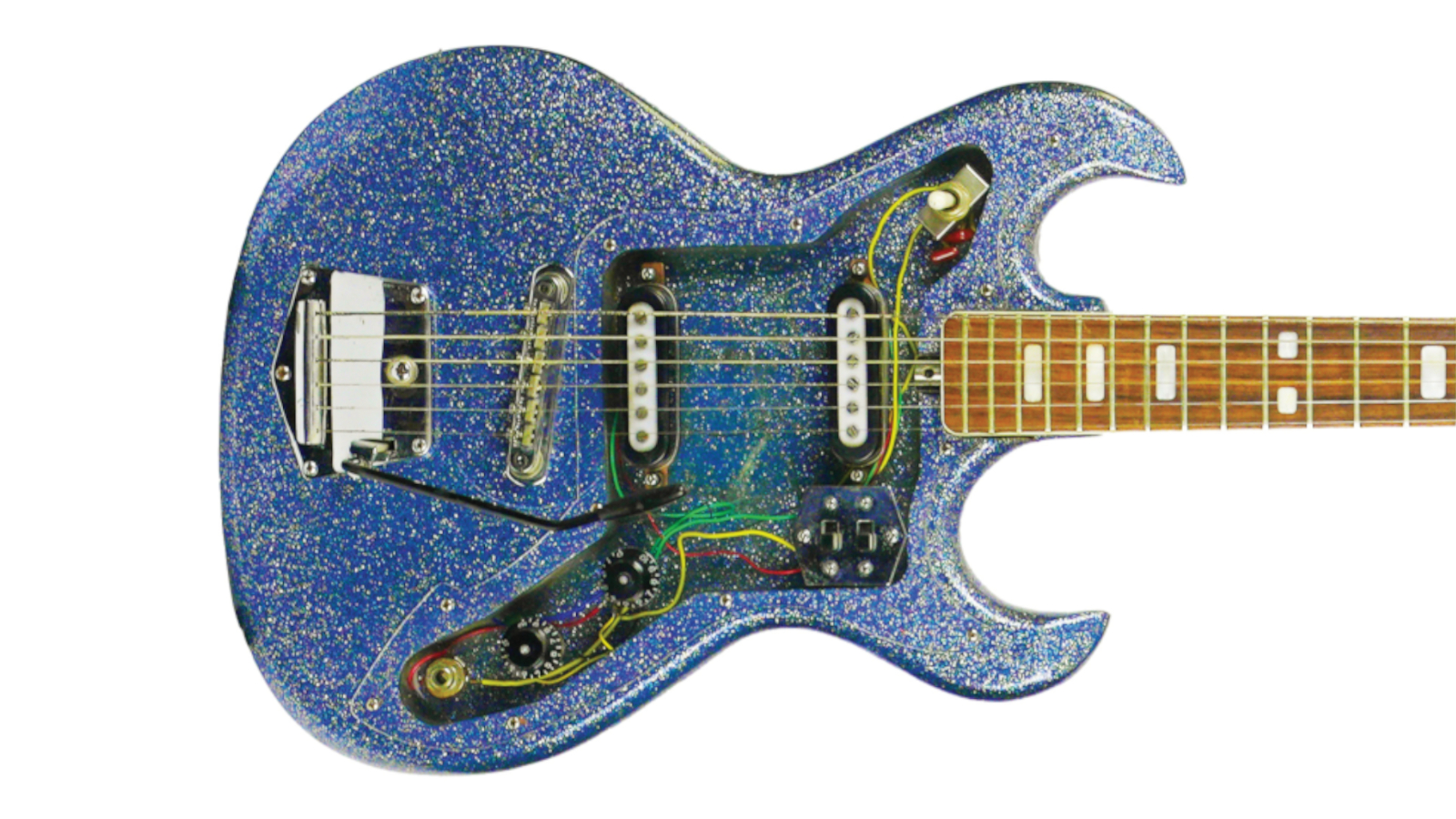
Playability & Sound
This Tele-Star actually plays quite well as a rhythm instrument. The action is super low, the frets have a nice rounded smooth profile, and the 21-fret neck is quite slender.
With that said, it’s rather limited for lead work.
Due to the absence of a headstock angle, the strings aren’t under a lot of tension. If it weren’t for the towel-rack string retainer, there would be nothing holding the strings down onto the fretboard.
As such, there’s not much sustain, and bending notes is a huge challenge, although stringing it with .009s helped.
As a rhythm guitar, the Tele-Star rules
But as a rhythm guitar, the Tele-Star rules.
Clean-tone funk-style playing is very chick-y and awesome, and when strummed with open chords, the guitar spits out snarky, nasally, midrange garage-rock tone.
Add a distortion pedal and the Tele-Star has a unique sound, although it’s not particularly outspoken or screechy in the cool way some of these Japanese builds tend to be.
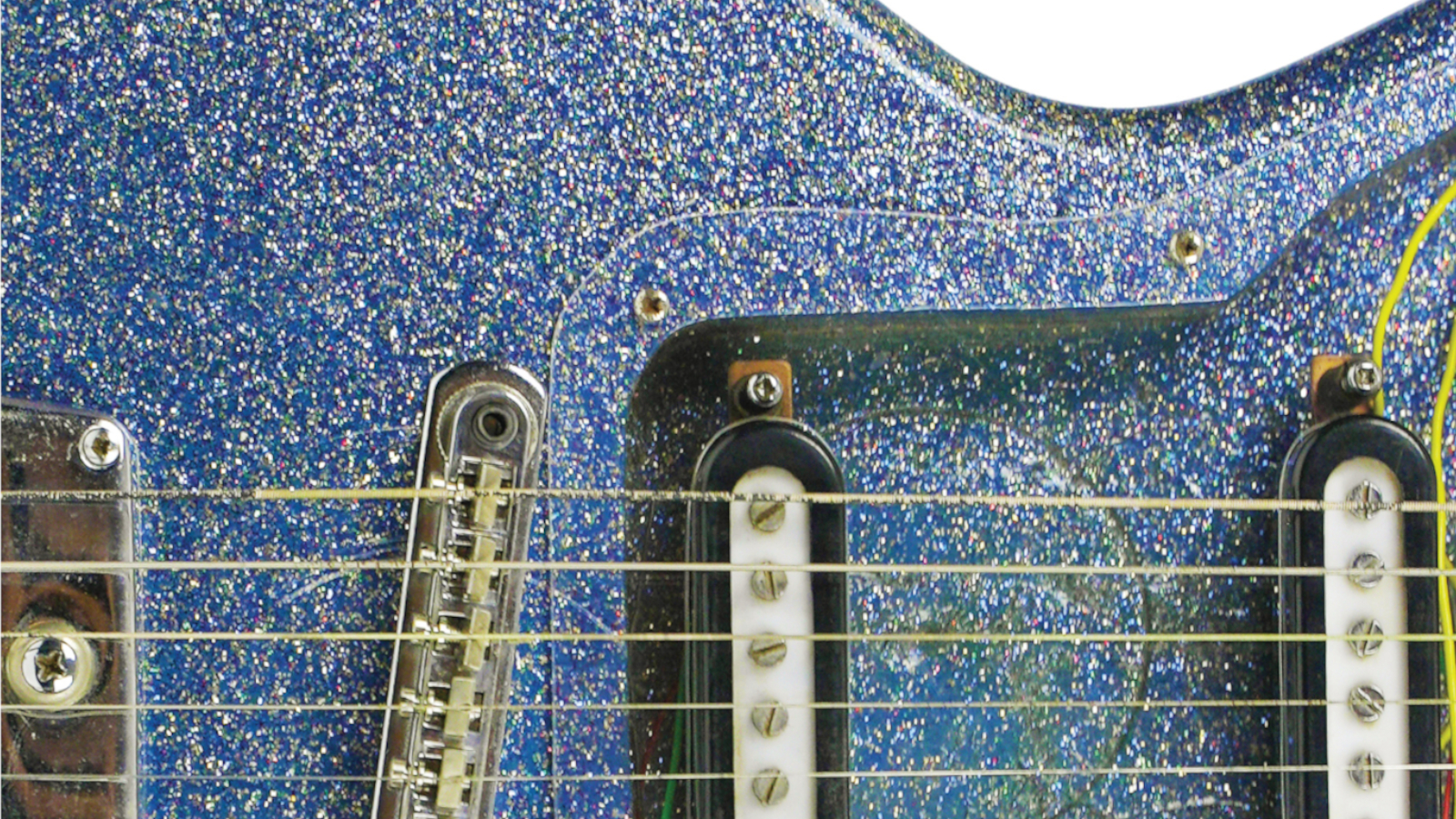
The neck on this example is a “propeller wood” multilaminate, with about 25 plys. It’s still straight as an arrow, but if it were to stray, a truss-rod adjustment at the butt end of the neck would make fixing it easy.
As for the electronics, the three-way toggle lets you choose either pickup or both, and there are global tone and volume knobs. The two rocker switches are an EQ bypass and a global kill switch.
The tremolo on my example is frozen. I opened it up to see if it was missing springs or something, but it’s not. Contrary to expectations, pushing down on the bar causes the pitch to rise about a semitone.
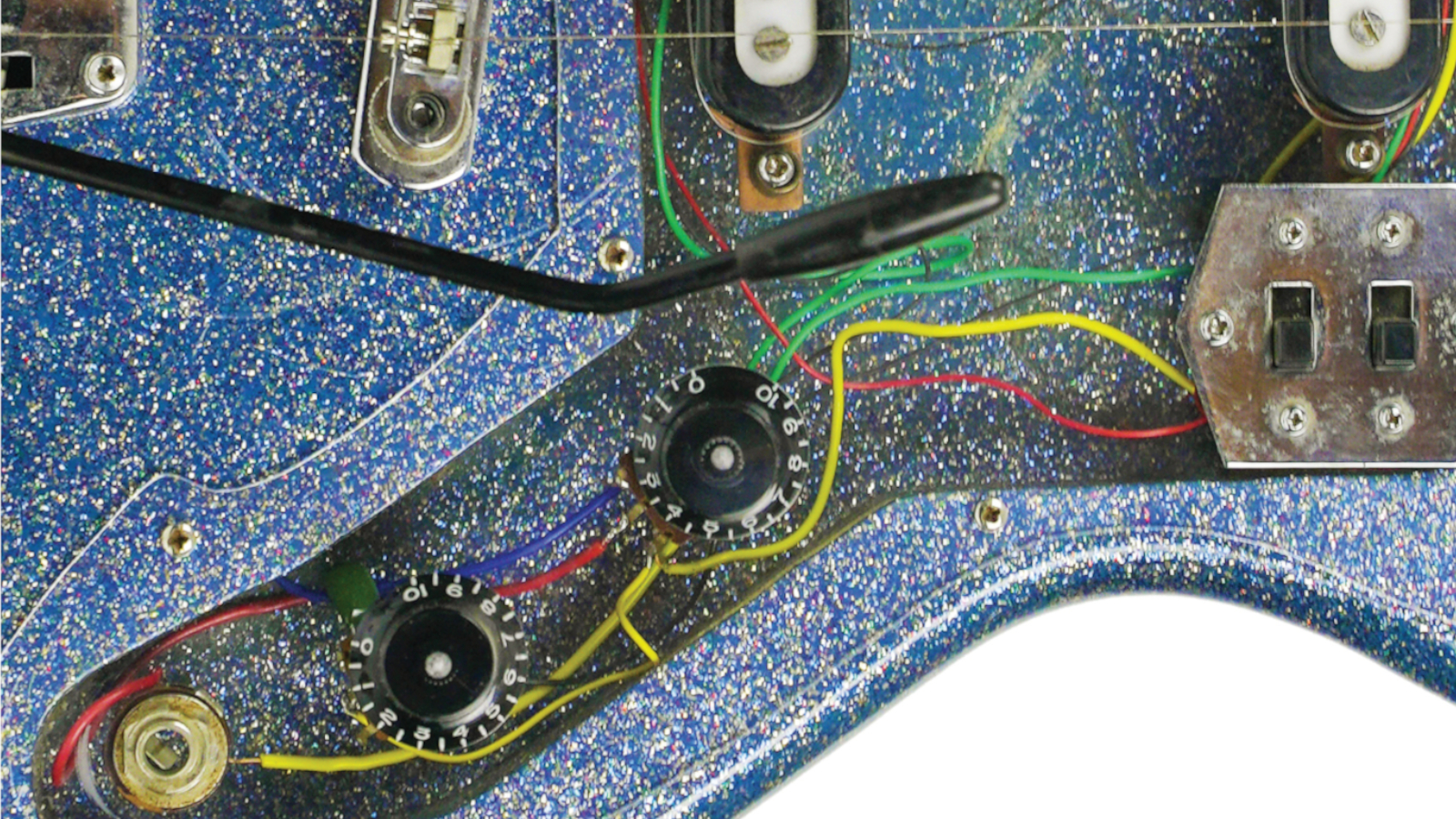
Value
These guitars sold new for about $50 in 1967. I paid $150 for mine about 20 years ago, and examples are still going for well under a grand.
Why It Rules
It’s dead sexy, super lightweight and sounds cool for most rhythm applications. Best of all, you can bag one relatively cheap.
Got a whack job? Feel free to get in touch with me at rtcarleton@gmail.com. Who knows? Maybe I’ll write about it.
